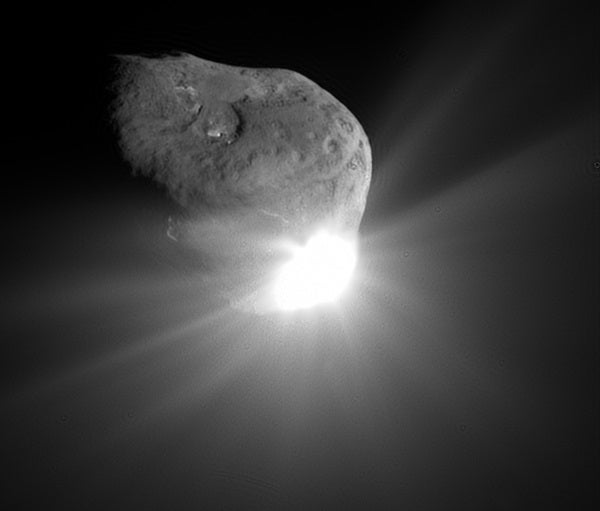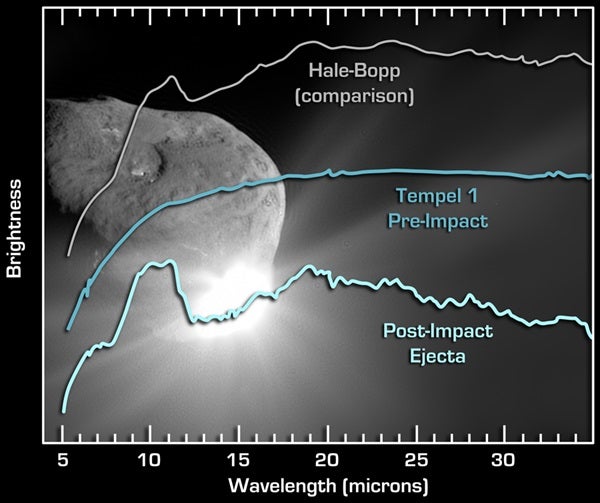Scientists who study comets are beginning to make sense of the plethora of data gleaned from 2005’s Deep Impact experiment with Comet Tempel 1 and teased from particles of Comet Wild 2 returned in 2006 by the Stardust spacecraft. What they’ve found is that comets share many of the same elements, while simultaneously showing significant differences.
Planetary scientist Carey Lisse of Johns Hopkins University Applied Physics Laboratory headed the observation team that watched Deep Impact’s collision with Comet Tempel 1 using the Spitzer Space Telescope’s Infrared Spectrograph. Lisse is also lead author of a paper comparing Tempel 1’s composition with that of Comet Hale-Bopp and the young stellar object HD 100546 — a young star system rich in cometary planetesimals and in the throes of building planets.
Hale-Bopp’s silicates and PAHs are less processed than Tempel 1’s, suggesting Hale-Bopp formed earlier than Tempel 1. “Either Tempel 1 is much different than other comets because it formed later, out of stuff that had been baked and broiled more by the young Sun and shock waves made when the giant planets formed, or the material in the comet has changed over time more than for other comets,” says Lisse. His team’s findings will appear in the August issue of Icarus.
All three objects contain olivines, pyroxenes, and metal, and they emit polycyclic aromatic hydrocarbons (PAHs) — carbon-containing molecules like those found in automobile exhaust.
A team of astronomers studying samples of Comet Wild 2 (pronounced “Vilt 2”) were surprised to find the comet may not have formed in the outer solar system, as they once believed. “We basically found solids [in Comet Wild 2] that formed in the hottest possible regions of the solar nebula, and we found them in the coldest possible place,” says University of Washington astronomer Don Brownlee, Stardust’s principal investigator. Calcium-aluminum intrusions — rocks tens of microns in size — found within the comet “form in the hottest regions of the solar nebula disk inside the orbit of Mercury,” says Brownlee. Research on Wild 2’s particle samples is ongoing, with more than 200 researchers contributing.











